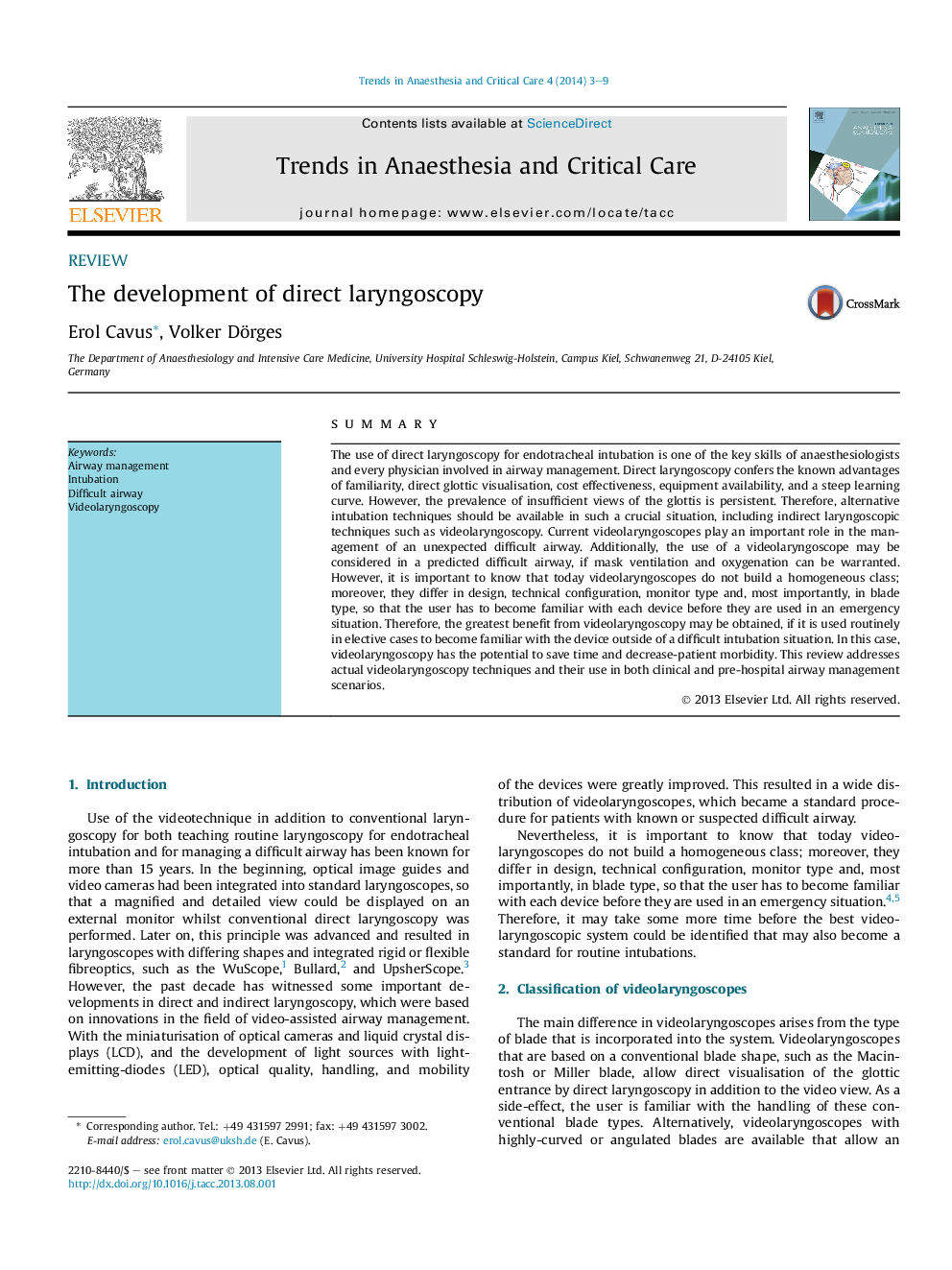| کد مقاله | کد نشریه | سال انتشار | مقاله انگلیسی | نسخه تمام متن |
|---|---|---|---|---|
| 2772729 | 1152091 | 2014 | 7 صفحه PDF | دانلود رایگان |
SummaryThe use of direct laryngoscopy for endotracheal intubation is one of the key skills of anaesthesiologists and every physician involved in airway management. Direct laryngoscopy confers the known advantages of familiarity, direct glottic visualisation, cost effectiveness, equipment availability, and a steep learning curve. However, the prevalence of insufficient views of the glottis is persistent. Therefore, alternative intubation techniques should be available in such a crucial situation, including indirect laryngoscopic techniques such as videolaryngoscopy. Current videolaryngoscopes play an important role in the management of an unexpected difficult airway. Additionally, the use of a videolaryngoscope may be considered in a predicted difficult airway, if mask ventilation and oxygenation can be warranted. However, it is important to know that today videolaryngoscopes do not build a homogeneous class; moreover, they differ in design, technical configuration, monitor type and, most importantly, in blade type, so that the user has to become familiar with each device before they are used in an emergency situation. Therefore, the greatest benefit from videolaryngoscopy may be obtained, if it is used routinely in elective cases to become familiar with the device outside of a difficult intubation situation. In this case, videolaryngoscopy has the potential to save time and decrease-patient morbidity. This review addresses actual videolaryngoscopy techniques and their use in both clinical and pre-hospital airway management scenarios.
Journal: Trends in Anaesthesia and Critical Care - Volume 4, Issue 1, February 2014, Pages 3–9
